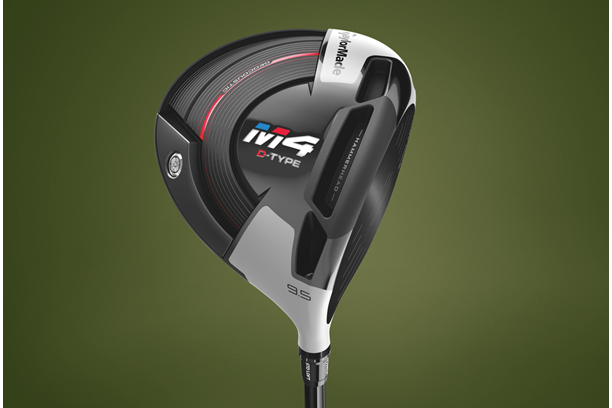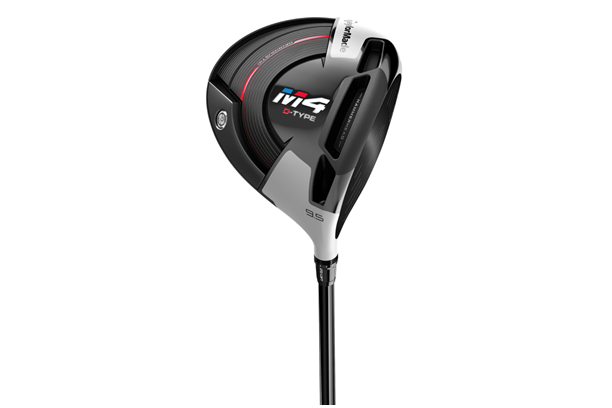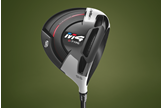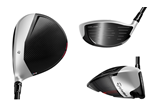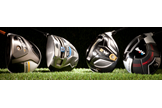TaylorMade M4 D-Type Driver Review
Last updated:
-
At a glance
- TG Rating
- Owner Rating
What we say...
The new TaylorMade M4 D-Type Driver is a high-launching, more draw-biased model
Details
- RRP £369
- Lofts: 9.5°, 10.5° & 12°
- Shafts: Matrix’ Platinum White Tie shaft 55 S,R and 45 A,L
In addition to the standard TaylorMade M4 Driver model, TaylorMade is also offering a higher-launching, more draw-biased model, the M4 D-Type Driver (also 460cc). The M4 D-Type (D signifying draw) combines multiple draw-biased design technologies to help players who consistently fight fade-to-slice trajectories find more fairways.
In addition to the multi-material construction, Twist Face technology and Hammerhead Speed Pocket, the D-Type is more heel-weighted (41g), has slight offset and uses advanced visual cues to promote a square face at address and a more draw-biased face at impac
Last year’s TaylorMade D-Type M2 was one of our favourite drivers, featuring slice-busting tech in a head that didn’t scream “I’m a slicer!”. The new TaylorMade M4 D-Type (D means draw) has all the tech of the normal version, but is more heel-weighted (41g), has a slight offset and uses subtle visual cues to promote a square face at address and a more draw-biased face at impact.
“Last year we introduced the D-Type. By moving 40g of weight in to the heel and peeling the matte silver on the face back but keeping it closed, allows us 20 yards more left-bias than the standard M4, which brings them from off the golf course to on the golf course – and that’s when twist-face takes over.”
TaylorMade M4 D-Type Driver Review: You should know
All the same Twist Face and Hammerhead tech as the standard M4 and M3, but with 41g of weight positioned more towards the heel, to ght a left-to-right shot shape. A slightly o set hosel gives golfers extra time to square the face at impact, but a clever paintjob means the face doesn’t look closed at address.
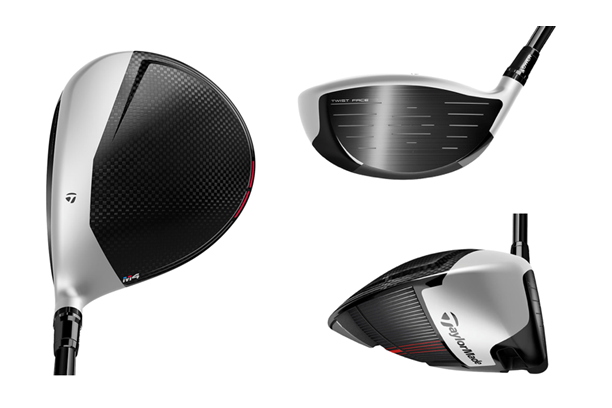
TaylorMade M4 D-Type Driver Review: We Say
For Simon the M4 D-Type delivered his joint longest carry distance (217 yards) with the Callaway Rogue Draw (both after being tted), proving Draw drivers really can deliver more powerful results, in the right hands. As light and responsive as the Matrix stock shaft is, it would have lowered Simon’s average carry distance by 13 yards, which reinforces the importance of a proper tting. If you’re wondering if Twist Face actually works, Simon hit 52% of shots from the high toe area (which is more open and lofted). These shots with the M4 D-Type produced 3mph more ball speed, 125rpm more back spin and 93rpm less side spin. That all added up to seven more yards than Simon’s test average! His low-heel shots also flew five yards further than his test average.
Everything you need to know about driver shaft weight. And why it’s now more important than flex.
TaylorMade M4 D-Type Driver Review: Verdict
A step-up in performance from the M2 D-Type, which we loved. We’re big fans of the new silver colour scheme, it’s more subtle and means the M4’s head doesn’t look quite as big as the M2 did in white. For slicers and heel strikers it’s the solid and powerful numbers that should grab your attention if you’re considering a new draw driver in 2018.
Old vs New Driver Review: M4 vs M2 vs SLDR vs RBZ
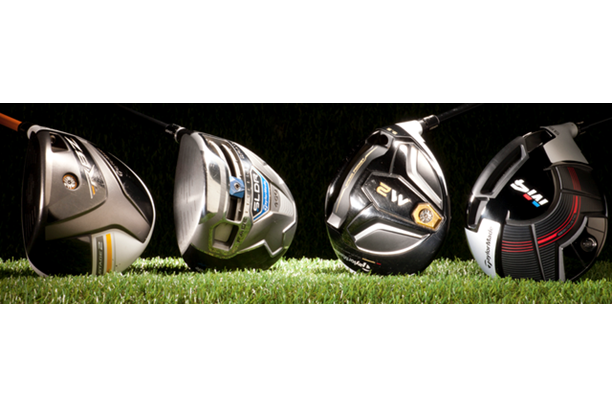
See our Best 2018 Driver Test here
TaylorMade M4 D-Type Driver:
Twist Face
The new TaylorMade M4 D-Type Driver uses the brands new innovative face design technology ‘Twist Face’, which in its simplest form has been created to achieve longer, straighter shots for the golfer.
By looking at data and analysing what the golfer does, TaylorMade found the most-common miss-hits were low-heel or high-toe shots, but that the bulge-and-roll concept used in previous drivers wasn’t rectifying this in the proper way. As a result, Twist-Face was born to correct the ball-flight on those miss-hits, allowing for straighter, and therefore longer, shots.
All three of the TaylorMade M3, TaylorMade M4 and TaylorMade M4 D-Type drivers have Twist Face technology, where the high toe has been ‘twisted’ open and the low heel closed with less loft to help correct the face angle for golfers biggest misses.
Brian Bazzel, VP of Product Design, said: “Ultimately what you’re trying to do is counteract what’s happening in the head and the effect that’s created. With Twist-Face, you’re going to go from 14 yards from low heel to high toe to essentially 3 yards. We talk about game changing innovations… this is where it’s at.”
“We twisted the toe back to add a little bit more loft to get it to go a little bit less left. On average that shot is finishing left of target, so you need it to be slightly more open. Same thing on the low heel; we’re trying to kill some of the spin so we de-lofted it (the heel) a bit more and we’re trying to get it to go less right so we bring it back, close it a little bit more and twist that face so we counteract the shots the golfers are doing, not what a robot would do”
Read all about Twist Face here
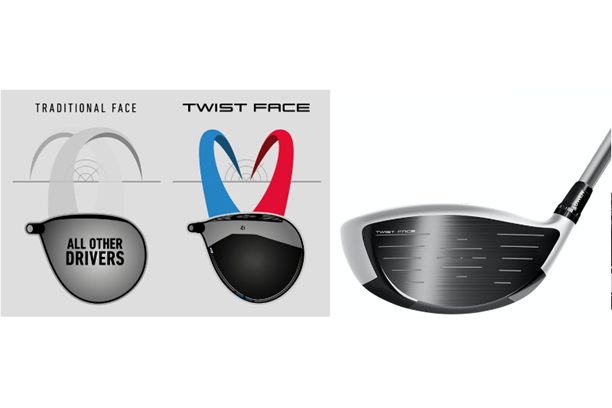
TaylorMade M4 D-Type Driver: Hammerhead slot
It was engineered to work in combination with Twist Face and Inverted Cone tech to deliver max ball speed across a larger area of the face. By dividing the Speed Pocket into zones, TaylorMade was able to increase its overall length in the new M4 D-Type driver from 82mm to 100mm – a 22% increase.
Additionally, it allowed for the creation of a larger flexible centre zone, designed to increase ball speed on low face impacts and drop unwanted backspin. By using the new ribs at enther end of the slot, engineers were able to decrease the thickness and weight allowing for a more flexible face.
Brian Bazzel, VP of Product Design, said: “A slot design or a speed pocket helped us create ball speed but it also let us drop the spin that was created with those designs so we could get high launch and low spin. This is one of the competitive advantages of TaylorMade drivers and fairway woods.”
“How the Hammerhead became different is that we used the centre section, we lengthened that slot and we used the centre section much like a speed pocket. Where it is different is by creating more stability on the heel and toe, we’re able to make the face 20% thinner, and lighter.”
“By doing that you create you get more flexibility, especially high on the face on high heel or high toe, so we’re trying to expand the sweet-spot. Right now we’ve been up against the USGA, R&A limit as it relates to ball CT, and now we’re trying to expand that to as large an area as possible.”
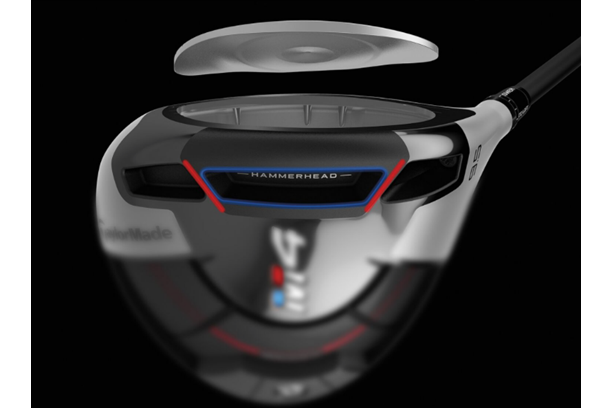
TaylorMade M4 D-Type Driver: Geocoustic Technology
Driver heads with low/back centre of gravity locations typically have low frequencies because they tend to have fairly flat soles. The new TaylorMade M4 D-Type driver’s Geocoustic sole shape allows for a low CG and larger head size, but with a more curved sole which has inherently higher frequencies, leading to better sound and feel. The Geocoustic sole design of the M4 driver freed up discretionary volume that allowed engineers to increase the overall face size and also improved sound and feel.
“We’ve sunken in that sole section – it’s more curved which allows us to stiffen it and create better sound and acoustics and by curving it it allows us to take a lot of the rib structures inside the head away, which weight we can take and put it in the back section to increase inertia. The footprint of M3 and M4, when you set it down, are identical; the difference is that the M4 face is slightly larger because we freed up a couple of CCs from the geocoustic sole and allowed us to make the face a bit bigger and is still considered 460cc.”
TaylorMade M4 D-Type Driver: Composite Crown
The new M4 D-Type TaylorMade driver (like the TaylorMade M3 driver) features a new matte silver front section and a raised, aerodynamic five-layer carbon composite crown. Years of research and development have culminated in the thinnest, strongest and lightest composite panels in the industry that TaylorMade have ever created.
The top crown (the raised section) is where the aerodynamics plays the biggest role, and is aimed to help you as you come through your downswing as that’s where you’re picking up speed. TaylorMade wanted to keep the flow attached as long as possible so to do that they built in a high crown for that angled plane of your downswing.
By casting it in a 5-layer carbon and raising it up they haven’t really raised the CG up at all but keep the air-flow attached longer. They also didn’t want to make the club look upright so the front section is flattened (almost like 2016 M1/M2) but were able to raise it with the carbon and improve aerodynamics.
